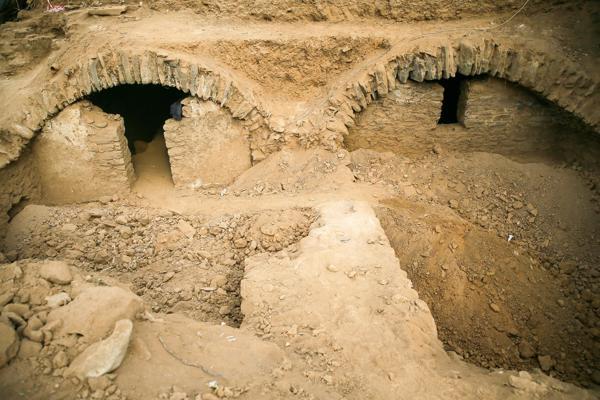Hypaipa ancient city comes to surface
İZMİR


A 2,000-year-old ancient city in İzmir’s Ödemiş district, Hypaipa, will be added to Turkey’s trove of tourism destinations as excavations there have been ongoing.
Located five kilometers from the district in Günlüce neighborhood, the city is known as one of the most important cities in the Lydian era. The name of the ancient city, which is considered to serve as a cultural center during the Persians and Romans as well as the Lydians, is frequently mentioned in Byzantine-era sources. The city also has two big tunnels from the Roman era.
Work was started two weeks ago by the Ödemiş Museum Directorate to unearth the ancient city, which is located in a strategically important spot on the trade route connecting the two important cities of the ancient period, Sardes and Ephesus.
The works also aim to unearth the cistern that met the water need of the city at the time.
Retired archaeologist Professor Veli Sevin, the scientific consultant to the excavations, spoke to the state-run Anadolu Agency, saying that Hypaipa was the second most important city in the region after Ephesus.
Sevin stated that because of this there are ruins with different architecture in a very wide area in the region. “There are many places to dig. This is a very big city with its theater, castle and city walls. This city developed and expanded in the Lydian and the Byzantine period. We think that many local and foreign tourists will want to see this place after the works.”
Sevin said that work continues in the Roman-era cistern in the ancient city of Hypaipa, and that the 1,600-year-old cistern consisting of two large galleries attracted attention with its architecture and size.
Stating that this place was in a very bad condition before and could not be entered, Sevin said: “We aim to clean it and open it to tourism. We started working about two weeks ago, but it is already getting attention. People started to come here. Therefore, the main purpose is to contribute to the tourism of the region by revealing our historical artifacts. The project is currently only limited to this area, but we expect the project to expand in the future.”
